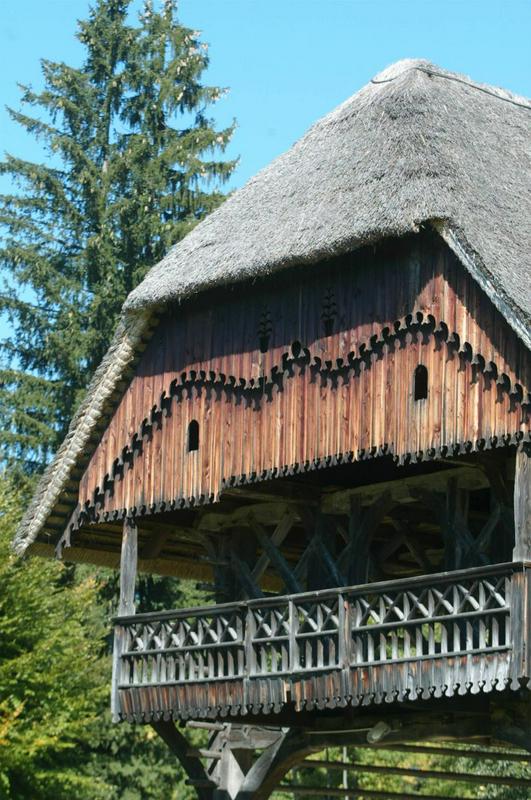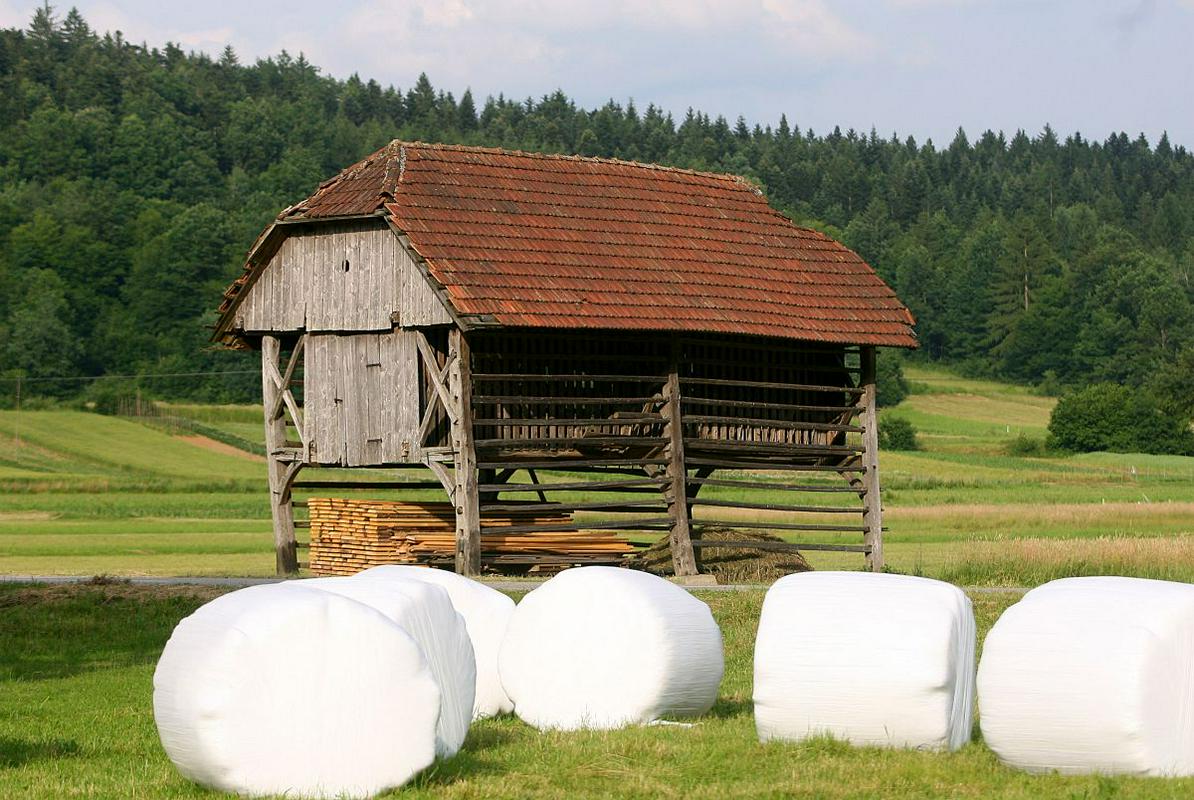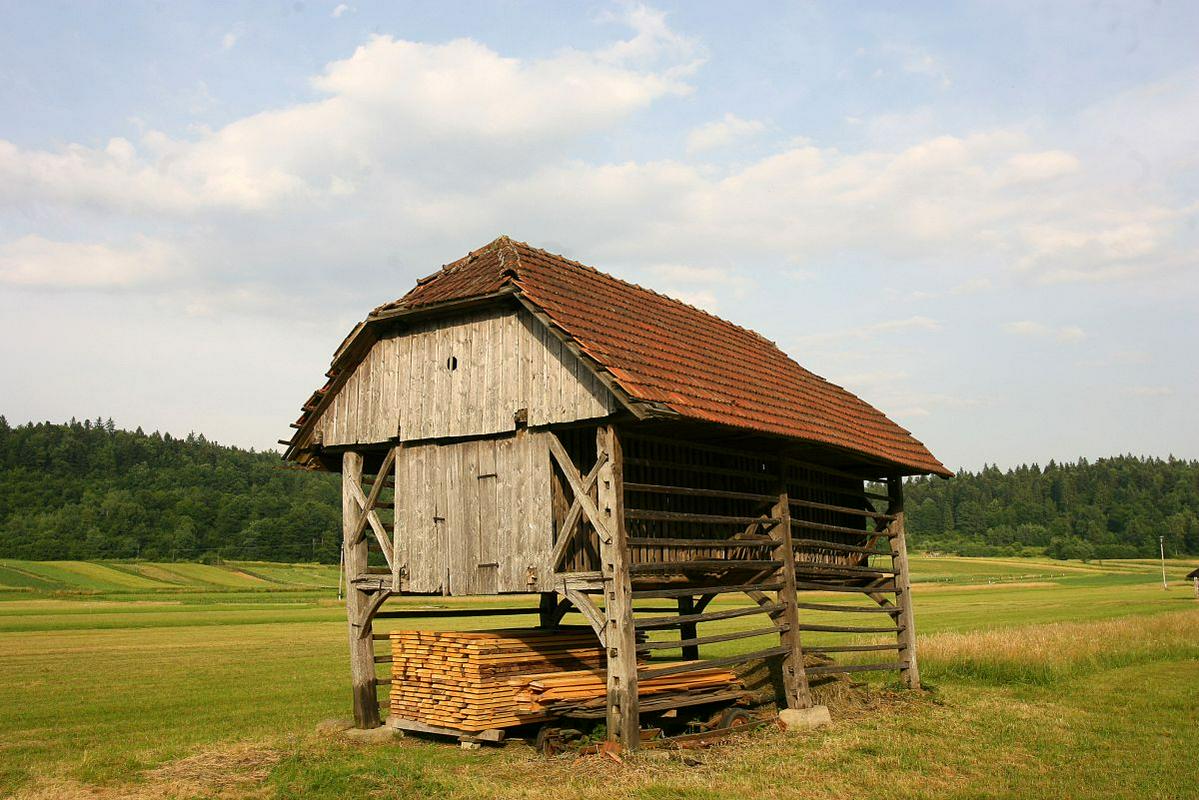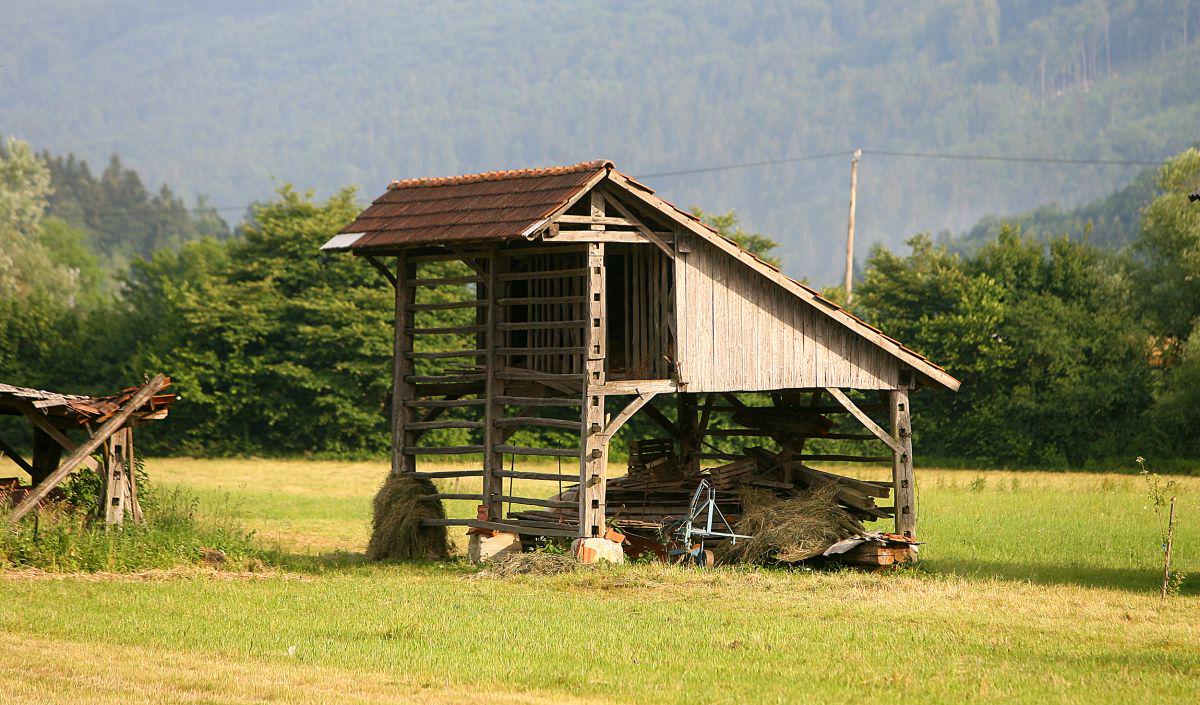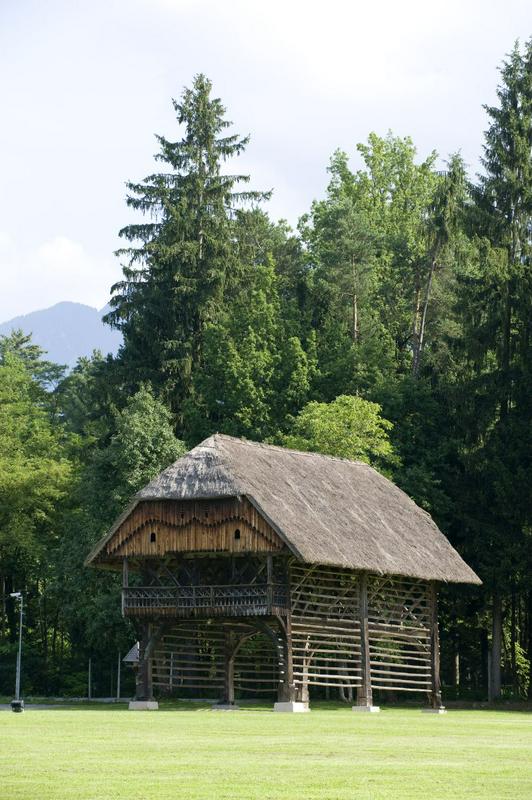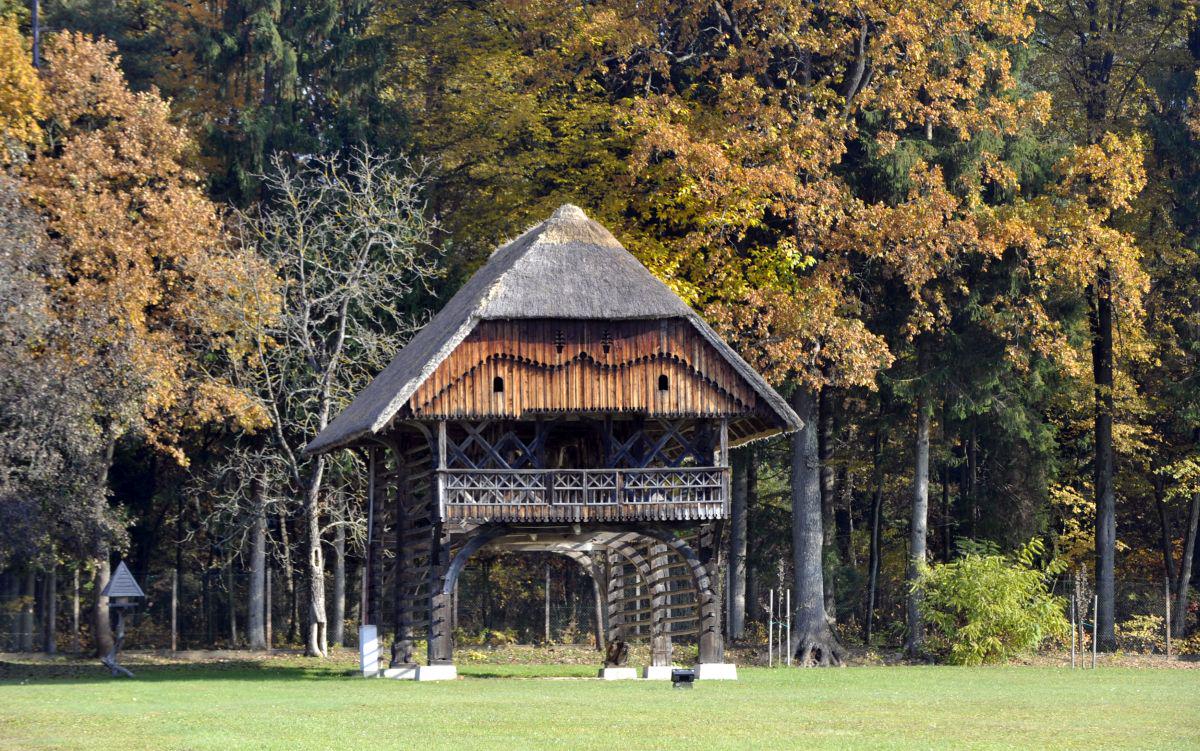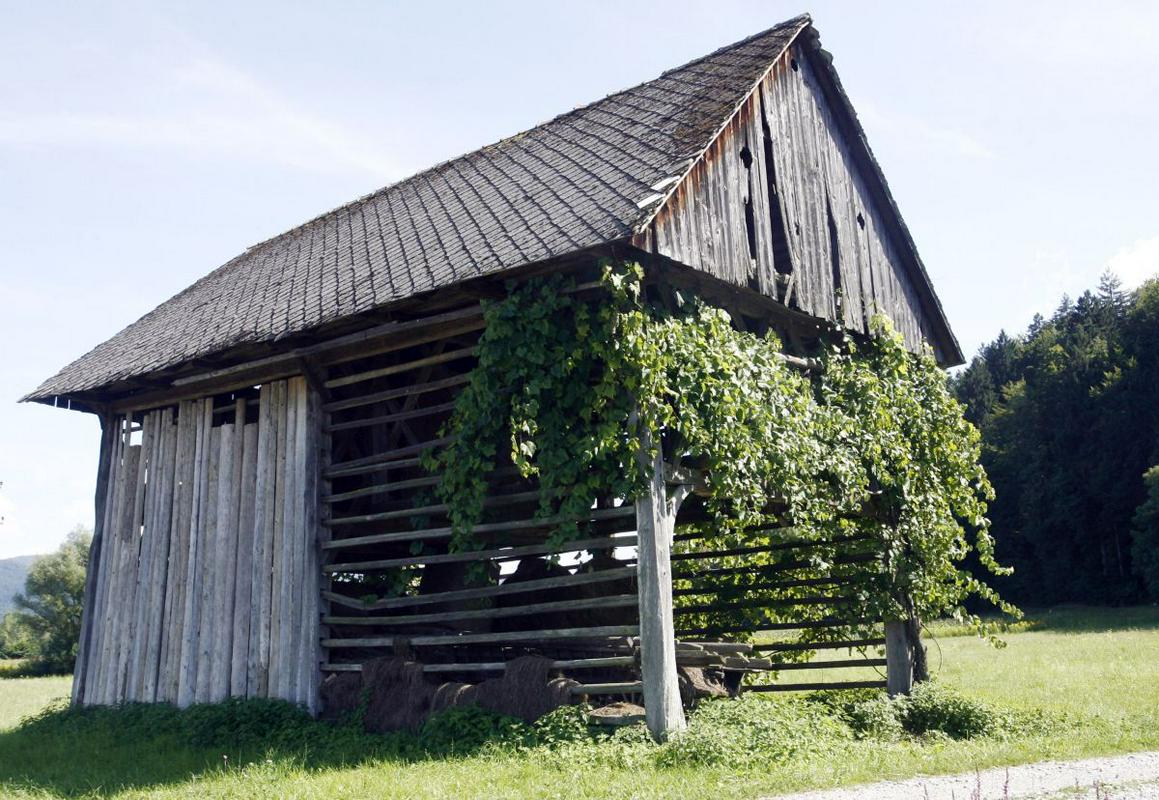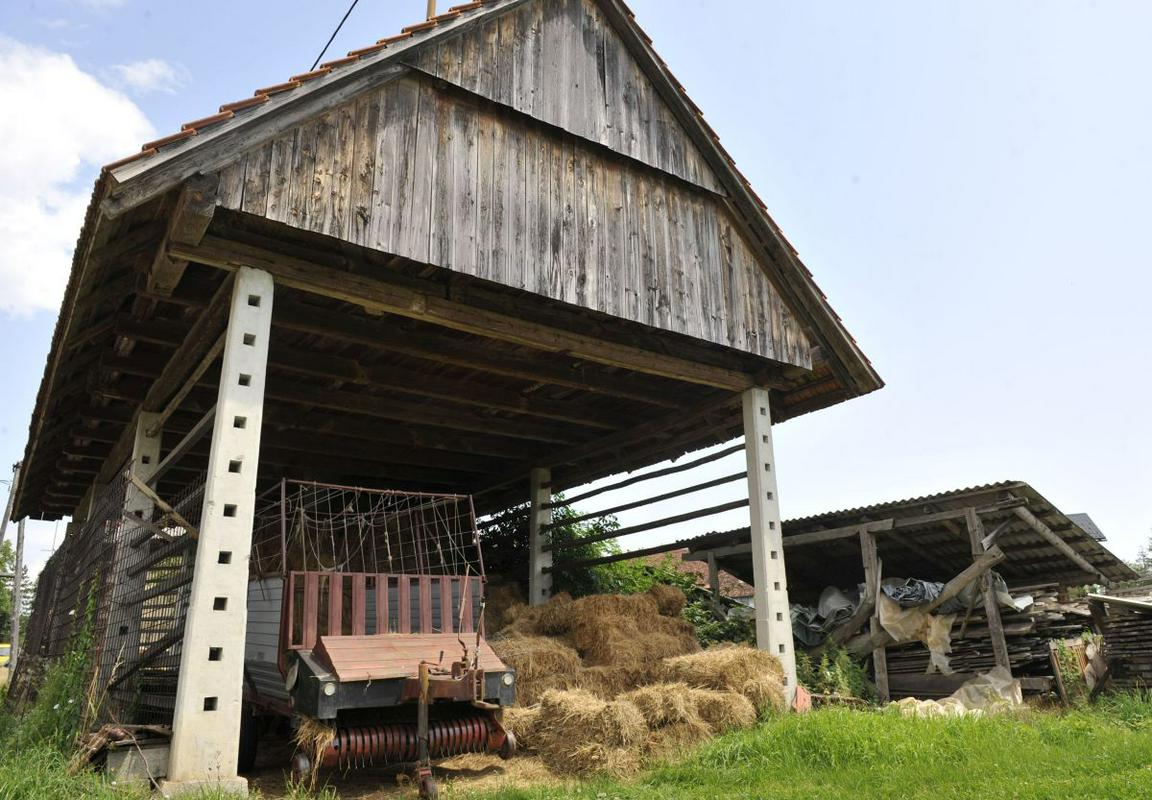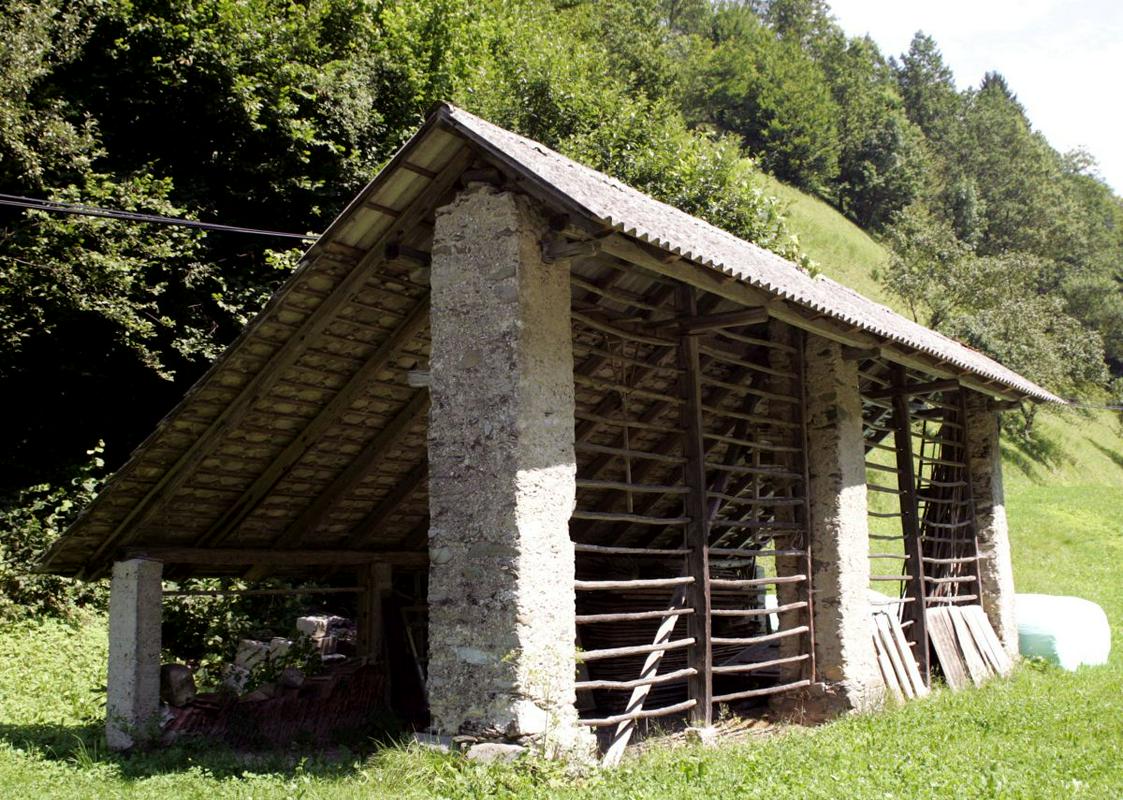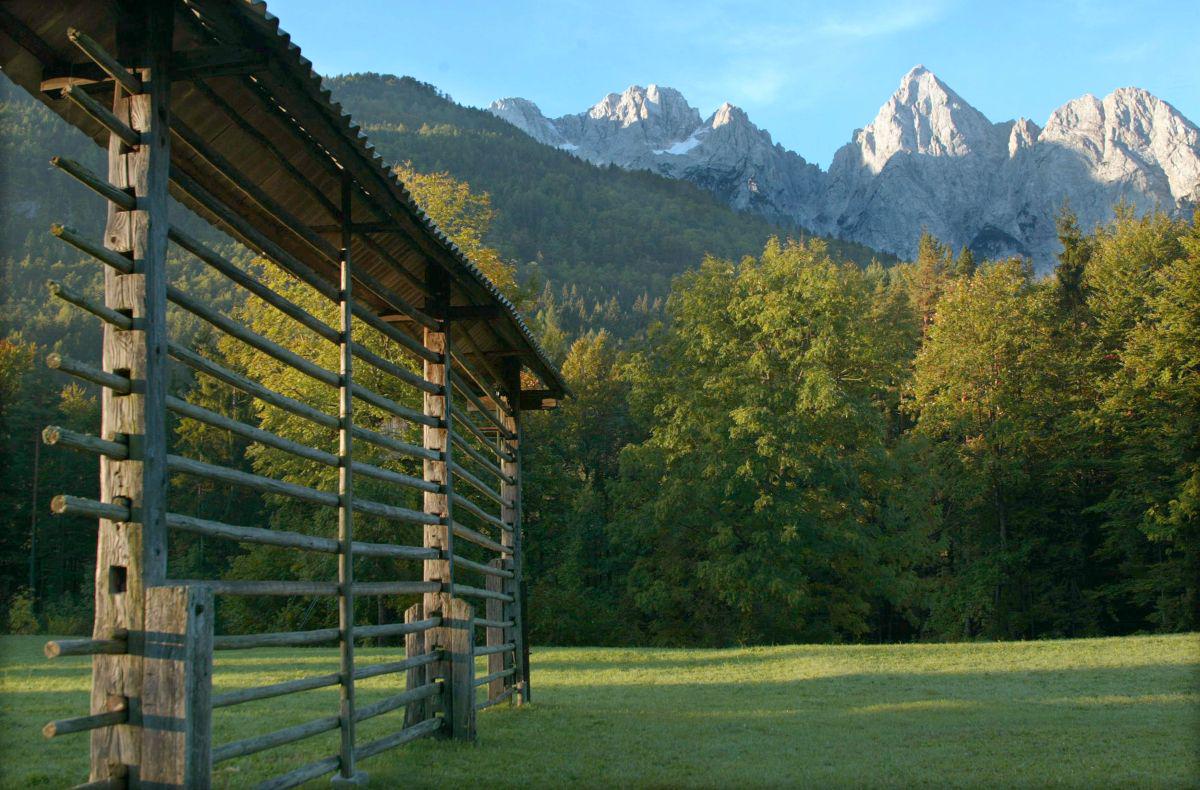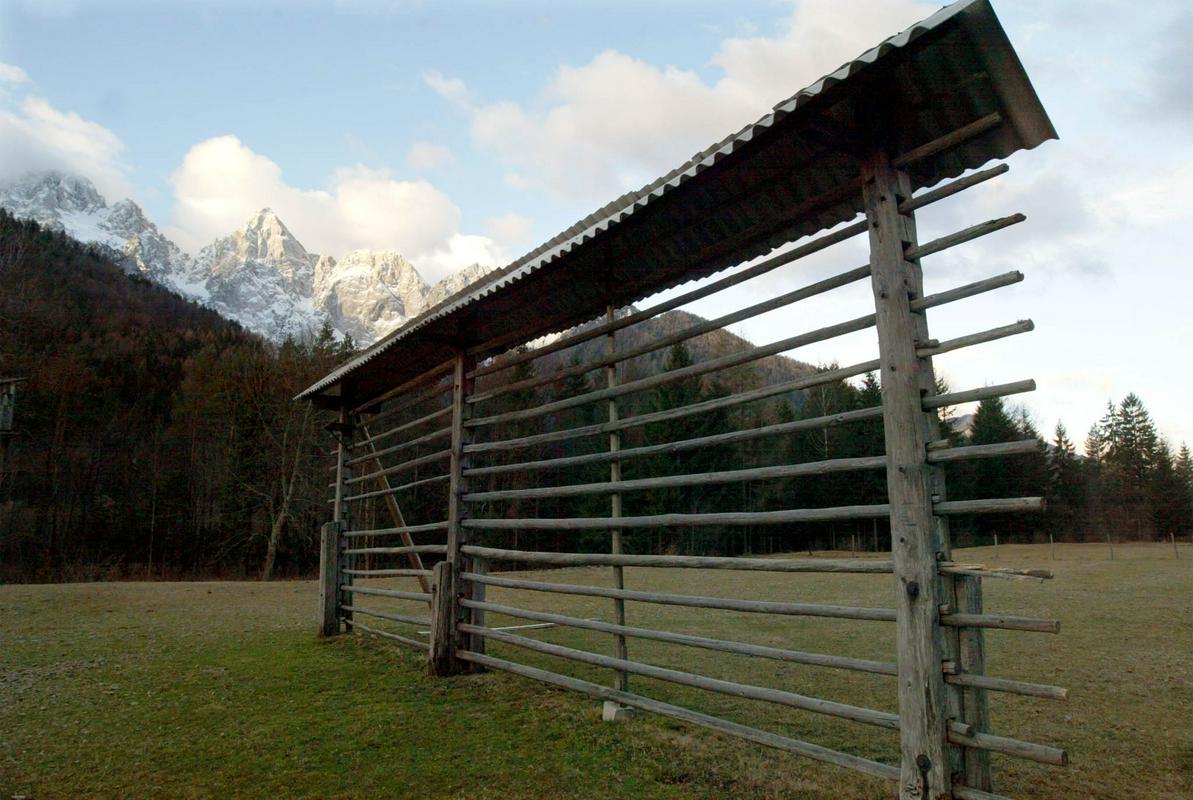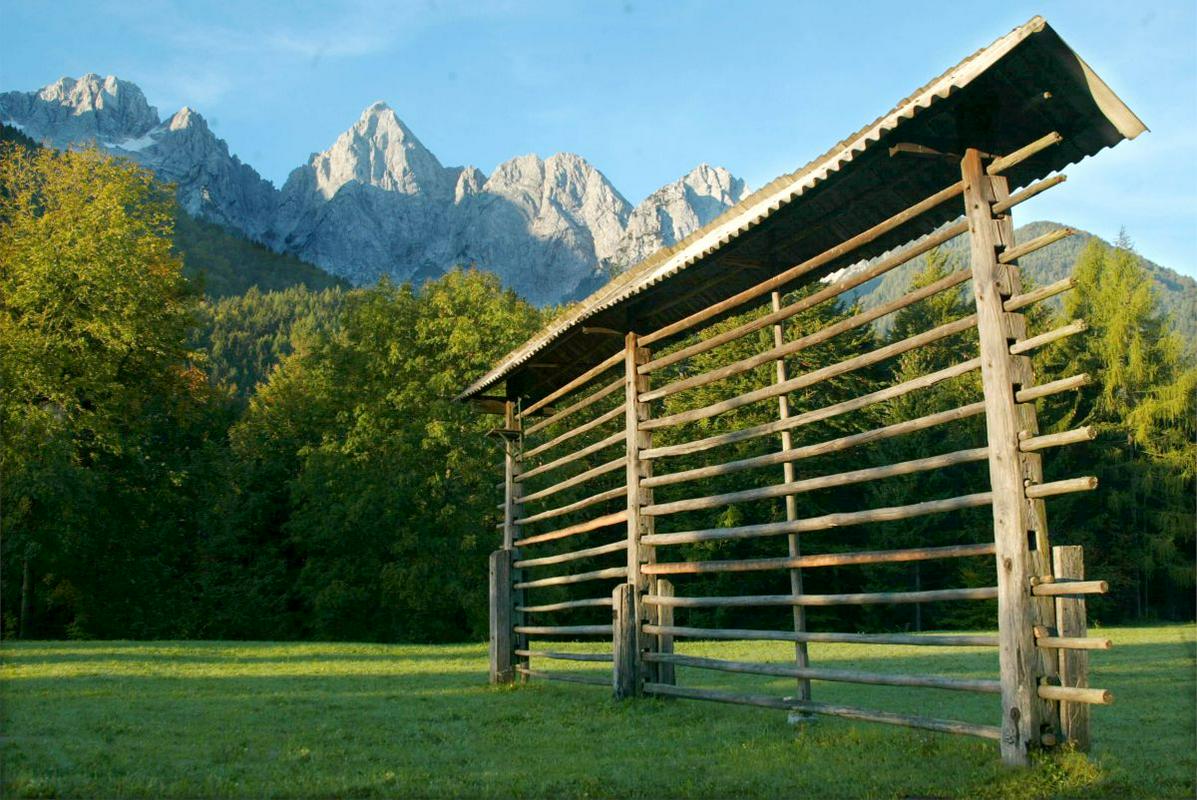
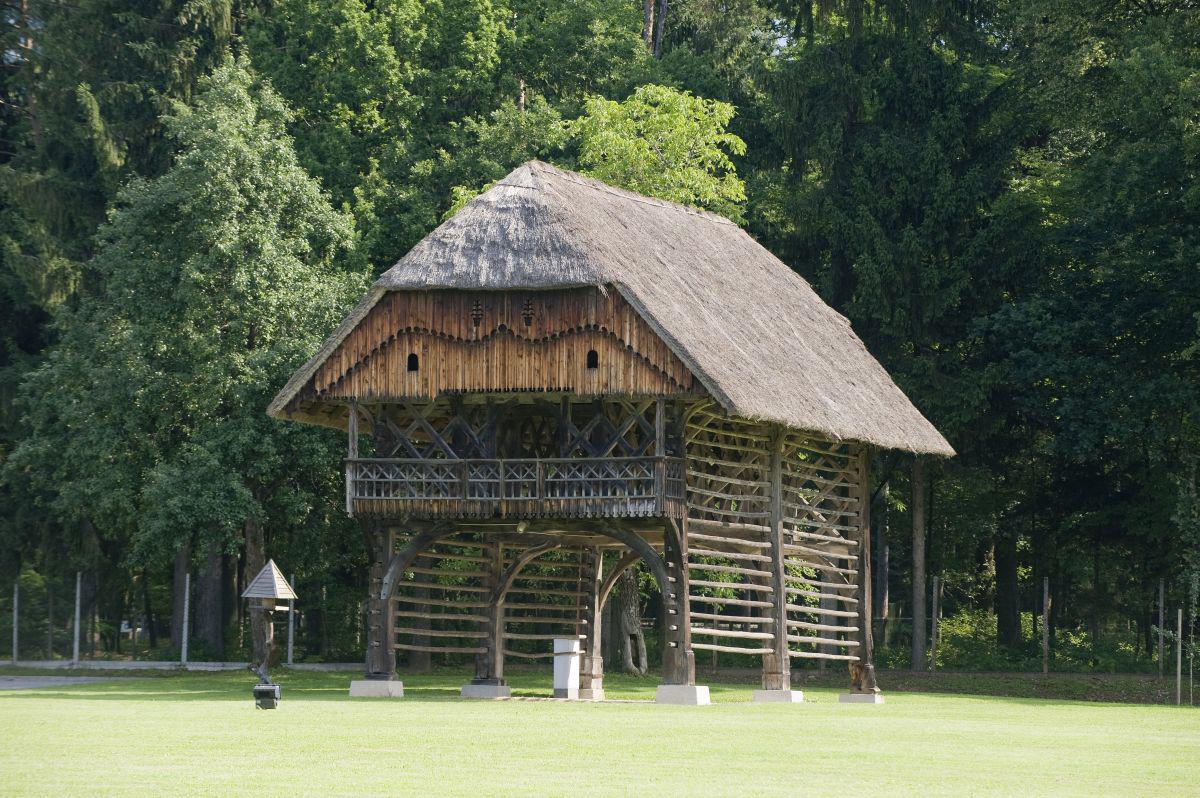
"Hay racks quite often stopped serving as spaces for drying hay, grain, and similar produce, but they have been getting new contents," ethnologist Alenka Lamovšek, curator of the Hay Rack Museum of the Land of Hayracks in the Šentrupert municipality, explained for STA.
Nowadays hay racks are used as covered parking spaces, or for storing agricultural machines or firewood. Some are used for tourism purposes. The role of a hay rack has been taken by hay bales of all shapes, which can be stored anywhere, she pointed out.
With introduction of silage the primary purpose of hay racks has become obsolete, said the carpenter Alojz Gregorčič from Slovenska vas at Šentrupert for STA. He learned his skill from his father. "It has been 30 to 40 years since we made the last hay rack," he said. Three to four decades ago the manner of preparation of fodder changed, he explained.
Now they just renovate hay racks, or move them to other location. "A hay rack today is used for luxury," he added. They are intended for other purposes than drying hay, one of them being tourism. The hay racks will stay alive for as long as people will be willing to maintain them, he believes.
The Hay Rack Museum presents the development of hay racks from the aspect of time, of space, and from the social aspect, from simple drying racks to later developed double hay racks 'toplars', explained Lamovšek. 19 different drying racks are exhibited in the open-air museum, originating from the Mirna valley, and one from the surroundings of Ivančna Gorica. The oldest exhibited hay rack, the double "Lukatov toplar", was made in 1795.
K. K.; translated by G. K.




















































